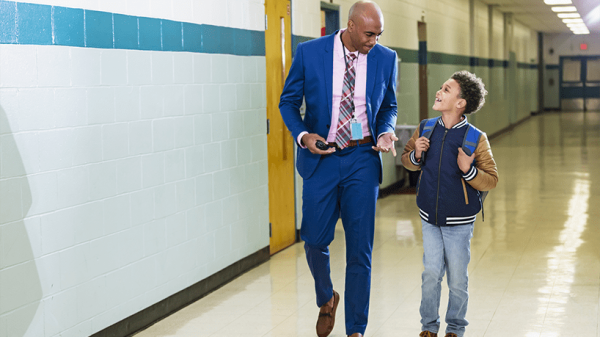Allison Garland knows why Learning Leaders for Learning Schools, an intensive professional learning cohort for certain Phoenix-area principals and district office personnel, works so well.
Actually, that’s a little misleading. There are, in fact, many reasons the three-year program, supported by the Arizona Department of Education and Learning Forward (with a grant from American Express and the National Association of Secondary School Principals), is showing great results after its first year. Those reasons range from a commitment to collaboration to buy-in from everyone involved in Learning Leaders. But what has Garland, executive director of school leadership at Littleton Elementary School District #65 in Arizona, and her team of principals so excited about tackling their problem of practice is the opportunity to create a supportive professional learning culture.
“The great thing about this team — there are seven principals, a director, and myself — is that we have a really strong culture,” Garland says. “Early on, we spent a lot of time working together and creating a clear vision of where we’re going along with action steps, so before we even started with Learning Leaders for Learning Schools, we were a pretty collaborative team. Team members aren’t afraid to ask questions, challenge systems, and work collaboratively to find solutions.”
What they’re in is a multidimensional learning group, one designed to help them solve a particular problem of practice. In the case of Littleton, that is establishing a common vocabulary or definition of what effective Tier 1 instruction looks like. Through learning communities, whole-group sessions, and coaching, they’re able to tackle their problem, learn from colleagues and coaches, develop new competencies, and eventually share results in such a way that they encourage collective inquiry and find practices that scale.
Even though the program is only one year in, Garland believes the lessons she and her team are learning can be applied to principals’ teams everywhere.
“In our district, we believe that all of our staff members are leaders in learning, caring, and growing,” she says. “That’s what our district’s vision is, and we firmly believe in collaboration. Therefore it is imperative that there’s a person from the district office working with a principal team. It is frustrating for schools when they don’t get the support and guidance they need. I think it’s a really, really important piece.”
The need for a supportive professional learning culture for principals is a thread you will find in many of the articles in the June issue of The Learning Professional, Learning Forward’s bimonthly magazine. There, you’ll find great analysis, anecdotes, and advice on every aspect of leadership learning: from on-the-job principal learning, to six key behaviors of learning leaders, to how we can tie student achievement to principal learning. Perhaps you’re thinking of setting up a micro-credentials program for your principals and other learning leaders — our tool that helps explain the concept of micro-credentials is a great place to start.
But if I have one takeaway from all these items — from the work Garland and her team are doing to the many aspects of learning leadership discussed in the issue — it would be to remember another quote from Garland: “It’s always about putting students in the middle of your learning, in the middle of solving our problems.” That’s something the best learning leaders never forget.
This column is adapted from the June issue of The Learning Professional, Learning Forward’s bimonthly magazine. It originally appeared in Learning Forward’s PD Watch.







